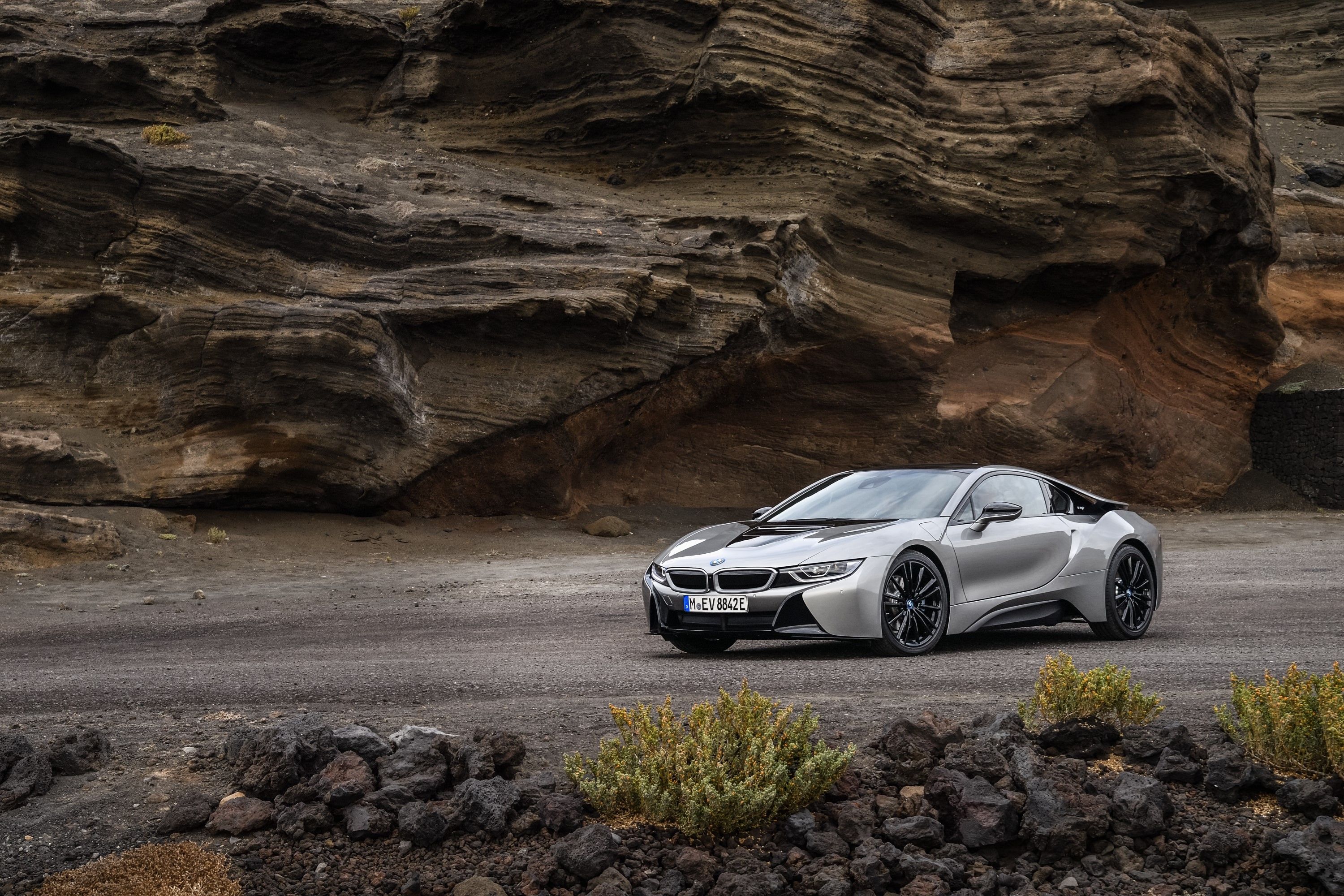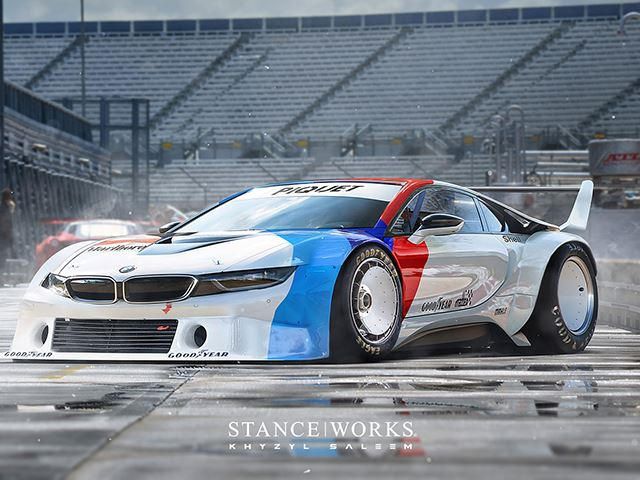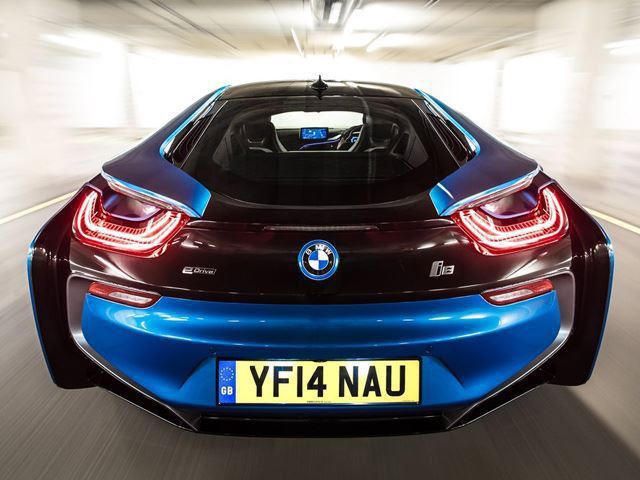Automotive digital art allows us to ask "what if?" We've seen renders of just about everything, most recently Manchester, UK-based artist Khyzyl Saleem partnered with Stance Works and gave us an idea of what an i8 would look like if envisioned as an M1 Procar. Enamored with the iconic M livery draped over the i8's gorgeous carbon fiber bodywork, we asked what if this was real? As it would be, digital artist Jon Sibal gave both gear- and "charge-heads" what they secretly didn't know they wanted, a realistic racing version of BMW's i8.
Logic tossed to the wind, and BMW willing to invest the needed research and development costs into a gentleman's racer, what would such deviance entail? There is an argument for it, somewhat, and that is as a test bed. Mercedes has its wildly successful F1 team, and Audi and Porsche both have Le Mans endeavors. Both are experiments in "to the limit" electric and conventional powertrains. The i8 serves BMW as a first step with surprising success. Taking that vehicular hypothesis further to the gladiatorial arena that is endurance motor sport might serve BMW well into the future. It is a gamble but the upsides outweigh the possibility of failure. Rather than start from the ground up, we'll go into the engine as BMW has already proved the chassis.
What it lacks then is a powertrain capable of competition. A horizontally mounted twin-turbo inline-six tucked behind the driver would seem to suffice. Except the logistics of managing the new weight distribution and re-developing a transmission to deliver power for the horizontally mounted engine could be tricky. (Understanding that you can't just drop any engine into any car is what separates engineers from guys siting behind keyboards.) Logic in this instance is the culpable baddie, which takes that sweet fantasy and turns it on its head. So, using logic to derive a more likely powertrain would see the turbocharged 1.5-liter three-cylinder tossed aside, making room for a bespoke four. The four could serve as a test bed.
It would be a proving ground for the proposed "electric turbo" system that BMW was rumored to use in a possible tri-cylinder variant of the M3/M4.Well, that didn't happen, though the idea is still floating about. This system could effectively reduce turbo lag to nil. BMW's "electric turbo" is a bit of a misnomer for what the technology actually offers. It's more of a hybrid design, combining a traditional turbine with an electric motor-generator. Separate axles spin the compressor and turbine while a clutch can engage or disengage each, while the electric motor stays spinning in the middle. The benefit of this design is that the electric motor powers the compressor to spin instantaneously on throttle input.
The design omits the delay of exhaust gases to spin the turbo regularly. The clutch, then, engages the turbine shaft enabling the turbo to function more traditionally. More interestingly, the tech omits the use of a wastegate. The electric motor transforms itself into a generator, taking the kinetic energy of the spinning turbine, and sending it back to the battery. Coupled with the electric motors and low weight, the i8 GT3 could prove devastatingly quick on corner exit, as well as highly efficient during endurance events. The FIA in all likeliness would leap at the chance to see GT3 take on a greener appearance. We think positive reactions from fans would follow as BMW, Audi, and Mercedes all do battle on a grid outside of DTM.
The entire premise of the i brand is a technological experiment to innovate modes of transport. It would make sense, then, that the crucible of racing should serve as a further way for BMW to innovate, and what better way to do that than with the i8. Game on, anyone?



